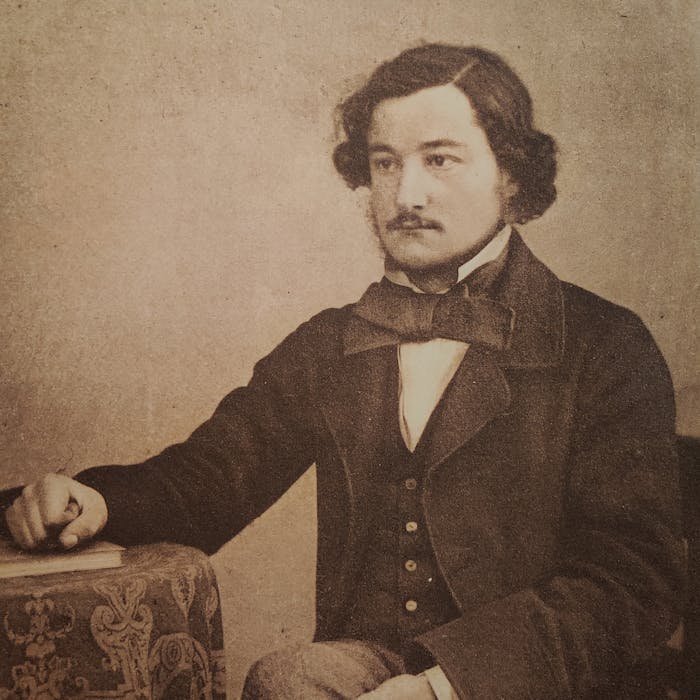
William Morris, influential artist, poet and thinker
William Morris is perhaps most associated these days with his wallpaper and textile designs, which are still very popular. However, he was a revolutionary force in Victorian Britain and became a major figure in the British Arts and Crafts movement.
William Morris was born in Walthamstow, Essex to a wealthy middle-class family in 1834. He grew up roaming nearby Epping Forest and developed a love of the English countryside. His imagination was also inspired by medieval churches and buildings, and by the Arthurian legends.
At Oxford University, Morris met fellow first-year undergraduate Edward Burne-Jones, who became his lifelong friend and collaborator. Morris became friends with painter Dante Gabriel Rossetti after Burne-Jones became his apprentice, and also developed a close friendship with Neo-Gothic architect Philip Webb. These talented men would be involved in many of Morris' creative endeavours for the rest of his life.
Morris became one of the most significant figures in the Arts and Crafts movement. He was perturbed by the rise of mechanised production and wished to emphasise the value of craftsmanship, simplicity and continuity with the past. He was enormously interested in all the decorative arts and tried his hand at many of them such as painting, weaving, book illumination, typography and embroidery.
Morris was also interested in Marxism and socialism, due to his sympathy for the working-classes and the poor. His own wife Jane was from a poor working-class background.
His friend Philip Webb designed a family home, Red House in Kent, for Morris and his wife Jane - in which they lived from 1859 to 1865. The Red House is considered architecturally significant and can be visited. The interiors were decorated by many of Morris's pre-Raphaelite friends.
Morris founded his firm Morris, Marshall, Faulkner & Co in 1861 with Burne-Jones, Rossetti, Webb, and others. The firm fast became highly fashionable and much in demand, and it profoundly influenced interior decoration throughout the Victorian period, with Morris designing tapestries, wallpaper, fabrics, furniture, and stained glass windows. In 1875, Morris assumed total control of the company, which was renamed Morris & Co and it subsequently traded until 1940, its longevity a testament to the success of Morris’s designs,
Morris also achieved success with the publication of several epic poems and novels, and in 1877 he founded the Society for the Protection of Ancient Buildings to campaign against the damage caused by Victorian architectural ‘restoration’.
Morris is recognised as one of the most significant cultural figures ofVictorian Britain. He was best known in his lifetime as a poet, although he posthumously became better known for his designs. The William Morris Society, founded in 1955, is devoted to his legacy, while multiple biographies and studies of his work have been published. Many of the buildings associated with his life are open to visitors, much of his work can be found in art galleries and museums, and his designs are still in production.
Morris is well-known for the phrase "have nothing in your houses that you do not know to be useful or believe to be beautiful."
Further reading
Links to external websites are not maintained by Bite Sized Britain. They are provided to give users access to additional information. Bite Sized Britain is not responsible for the content of these external websites.
